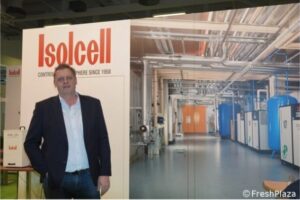
Proud to See Tito Spaldi Featured on FreshPlaza!
🌱 Proud to See Tito Spaldi Featured on FreshPlaza! 🌎 Our Sales Manager shares valuable insights on the future of agriculture in the latest Fresh Plaza article.
The National Library of Israel, formerly Jewish National and University Library is the library dedicated to collecting the cultural treasures of Israel and of Jewish heritage. The library holds more than 5 million books. The National Library owns the world’s largest collections of Hebraica and Judaica, and is the repository of many rare and unique manuscripts, books and artifacts.
In 2014, the project for a new home of the Library in Jerusalem was unveiled. The over 40.000 square meters building, designed by the Basel-based architecture firm Herzog & de Meuron, is located on Kaplan Street 1, Jerusalem, Israel.

Kaplan Street 1, Jerusalem, Israel.
Active fire prevention to protect millions of books in Jerusalem
Fire risk analysis
For a fire to ignite three elements are needed: heat, combustibles, and an oxidizing agent, usually oxygen. Books are dry materials and cannot ignite themselves. However, being the books stored inside an automated archive, the electrical equipment used e.g., stacker crane, can become such a source of trigger. The National Library decided to use ISOLCELL’s oxygen reduction solution to protect over 5 million books stored inside the brand-new automated archive.
The protection objective
Fire prevention measures aim to protect property from damage. Once a fire starts, even with efficient suppression efforts, there can be extensive property loss. Therefore, traditional fire suppression system like for example sprinkler, was never taken into consideration by the National Library of Israel management.
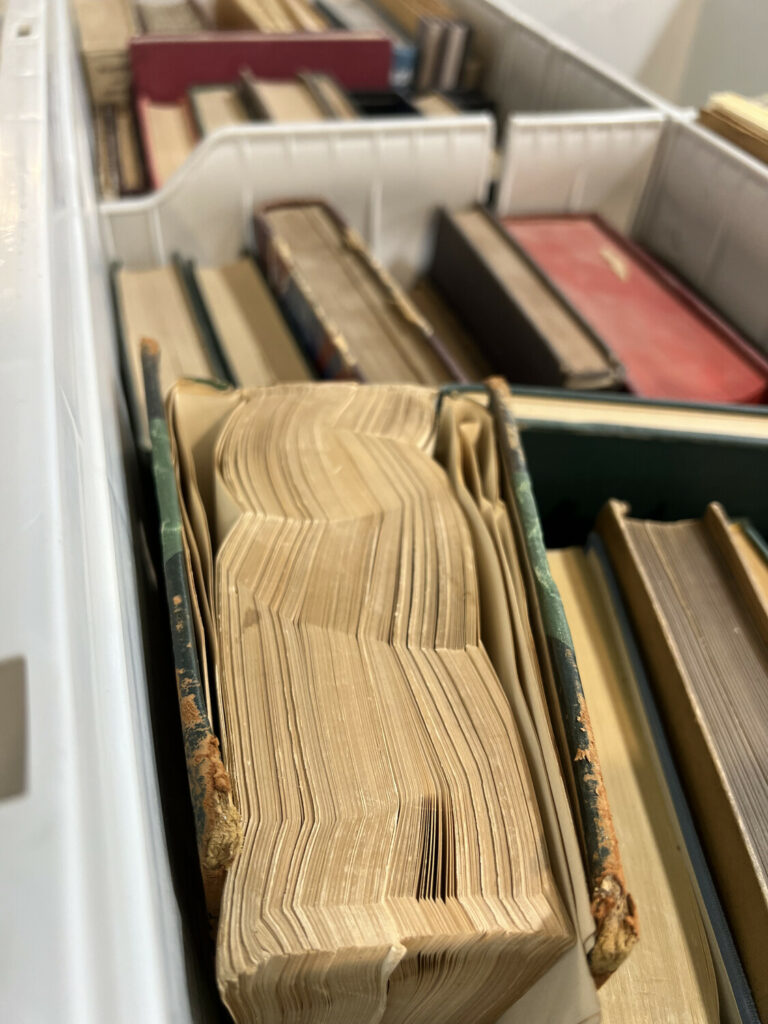
Over 5 billion books to be protected
The fire prevention solution
The N2 Oxygen Reduction System® actively prevents the combustion process to get started by uninterruptedly reducing the amount of oxygen. The OR-System, which acts as primary and only fire protection system (supported also by an Aspiration Smoke Detection system), has been designed to keep a lower oxygen content compared to normal breathing air (which contains 20,95 vol. %).
Technology applied
The oxygen-reduced air is generated through molecular separation using ADOX® oxygen adsobers with VPSA (Vacuum Pressure Swing Adsorber) technology. In addition 10 N2 ORS OXYGEN SENSORS with high redundancy features, alongside as many smoke detectors, monitor continuously the oxygen concentration within the protected area.

International general requirement
Oxygen reduction fire prevention system designed according to ISO 20338
The fire prevention system has been designed according to the general requirement ISO 20338:2019(E) Oxygen reduction systems for fire prevention – Design, installation, planning and maintenance. ISO (the International Organization for Standardization) is a worldwide federation of national standards bodies (ISO member bodies).
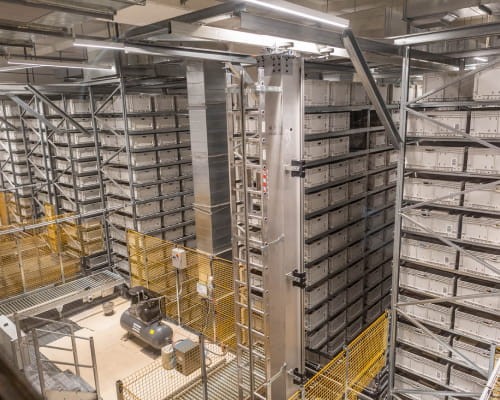
Fully automated archive
The NLI automated archive “data in hand”
Store goods: books, paper documents
Given protection level according to the standard: 14,1 vol.%
Automated Archive
Type of building: concrete Building
dimensions: 74,70 x 24,50 x 18,85 m
Volume: 34.500 m3
Temperature within the archive: 18°C
Temperature within the protected area: 2° C… 17° C
Air conditioning system: closed-circuit
Air-leakage n50 value: 0,04
Openings data
Door’s type: air-permeability fast acting shutter doors
Airlock system: yes
Quantity: 2
Opening size: 1 m2 each
Opening duration: 7 seconds during goods passage
Opening h/max: 100 In & 100 Out
Operation: 7 hours per 7 days week
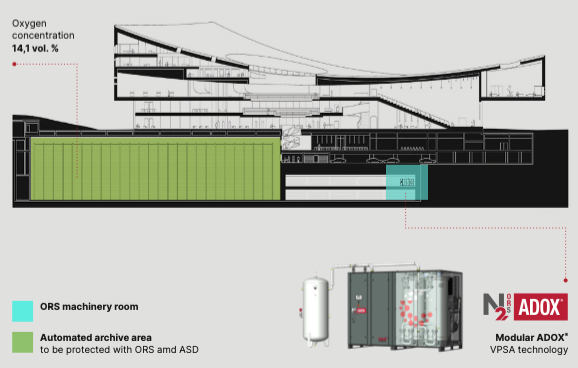
Underground automated book storage
From 20.95 vol.- O2 % to 14,1 vol – O2%
The oxygen concentration inside the automated archive at the National Library of Israel has been decreased to 14,1 vol. %. The given safety level is according to the general requirement ISO 20338 Annex A: ignition thresholds for oxygen reduction using nitrogen enriched air in fire prevention. The materials flammability test has been done according to VdS Test report
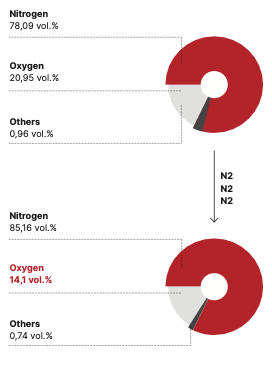
Oxygen concentration level
N2 ORS design
The Isolcell’s modular ADOX® XL2 VPSA system has been installed. The designed machine consists of three individual modules, capable to work independently, thus ensuring high redundancy. For that reason, the machine has been certified SIL-3 by Tüv (IEC 61508) The XL2 machine reduces the oxygen content by introducing oxygen-reduced air to the NLI automated archive, at a rate of 270 m3/h
The machinery room is equipped with:
• No. 1 ADOX VPSA XL2 machine with modular technology (3 x modules) SIL-3
• Buffer – process tanks
• 2 x Air compressors Kaeser (redundancy)
• Compressed air tank
• Oil-water separator
• Electrical cabinet
• Temperature and humidity sensors
• Galvanized steel pipes
• Manifold 1 + 8 + 1 positions and redundant electrical valves SIL-3
• Connector for external nitrogen supply
• I/O modules SIL-3
• Exhaust steel pipes for oxygen enriched air
• Cabling
• 2 x ORS Main Control Unit – C.I.E. (Master + Slave) SIL-3
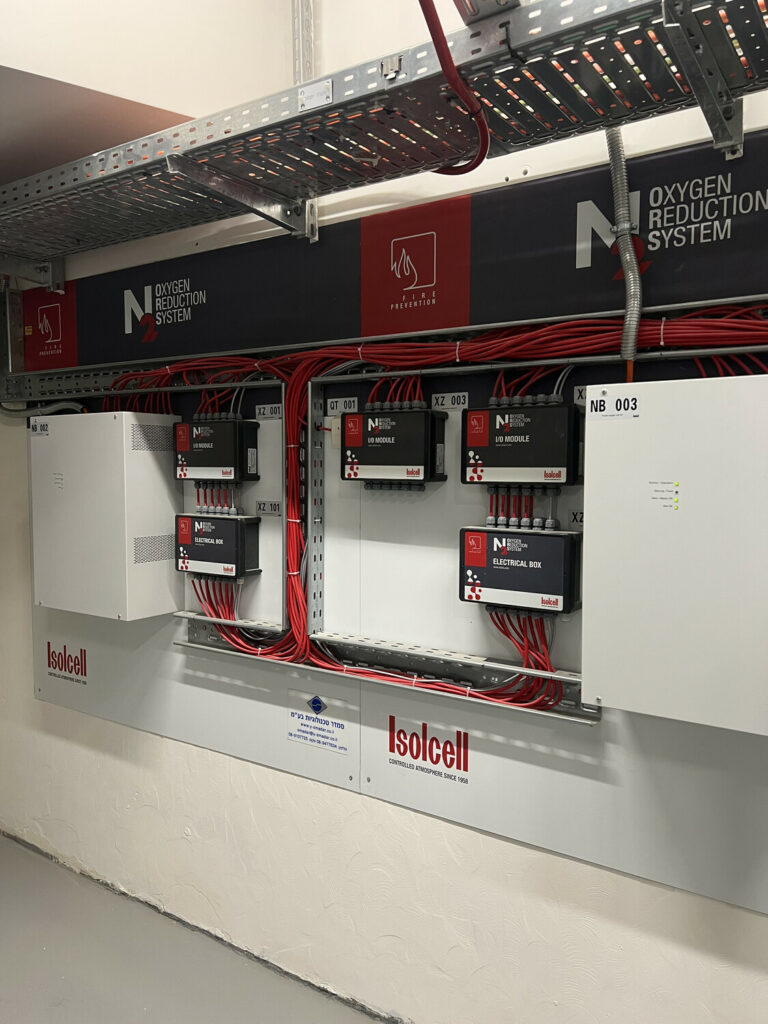
Machinery room
Automated archive is equipped with:
• SIL-3 and VdS certified
• Air filters
• 10 x aspirating smoke detectors
• ABS pipes for oxygen analysis
• Power supplies
• Back-up batteries (24 hours)
• Cables, redundancy
• Double communication cable CANBUS 1 CANBUS 2
• Double power supply cable POWER 1 POWER 2
• 3 x touchscreen digital display oxygen level
• Set of alarm devices
• I/O modules SIL-3
• Galvanized steel pipes
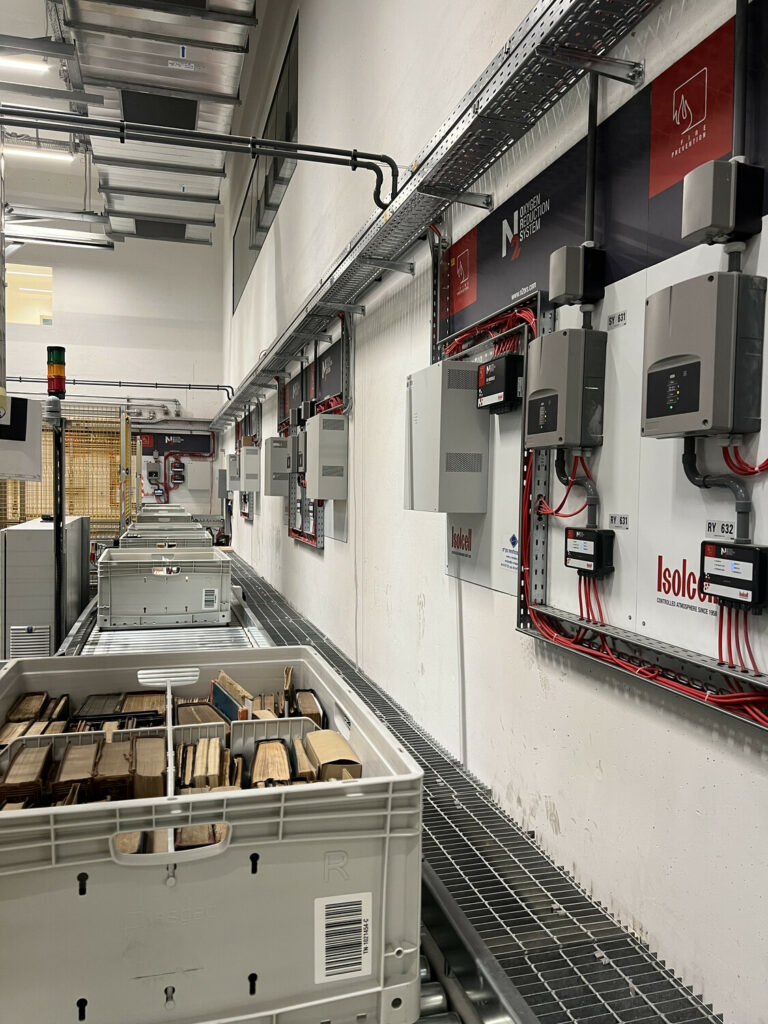
Inside the automated book storage i.e. archive
Modular ADOX® VPSA technology
Low-pressure system = low-energy consumption and wear
ADOX® systems (VPSA technology) are the most high-performance: these are modular systems developed specifically for fire prevention using oxygen reduction and guarantee greater safety, because they operate on the basis of redundancy. Thanks to its exclusive technology, ADOX® can operate at low pressure, significantly reducing energy consumption and wear. Unlike high-pressure systems (PSA or membrane), which require a series of elements necessary for the compressed-air chain, ADOX® systems operate using low pressure and thus consume less energy compared to the two other technologies and require less maintenance. Furthermore, they are ready to use (plug & play) because they contain within them everything they need to operate.
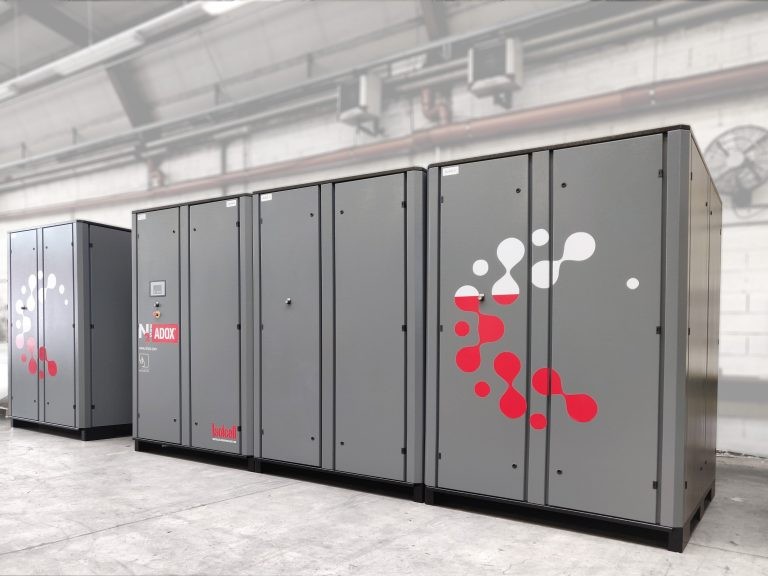
Oxygen reduced air distribution system
Steel galvanized pipes have been installed from machinery room (manifold) upon reaching the protected area i.e., automated archive. The steel pipes were installed on the floor. The oxygen-reduced air is injected through 21 steel nozzle, accurately positioned according to ISOLCELL’s virtual grid system.
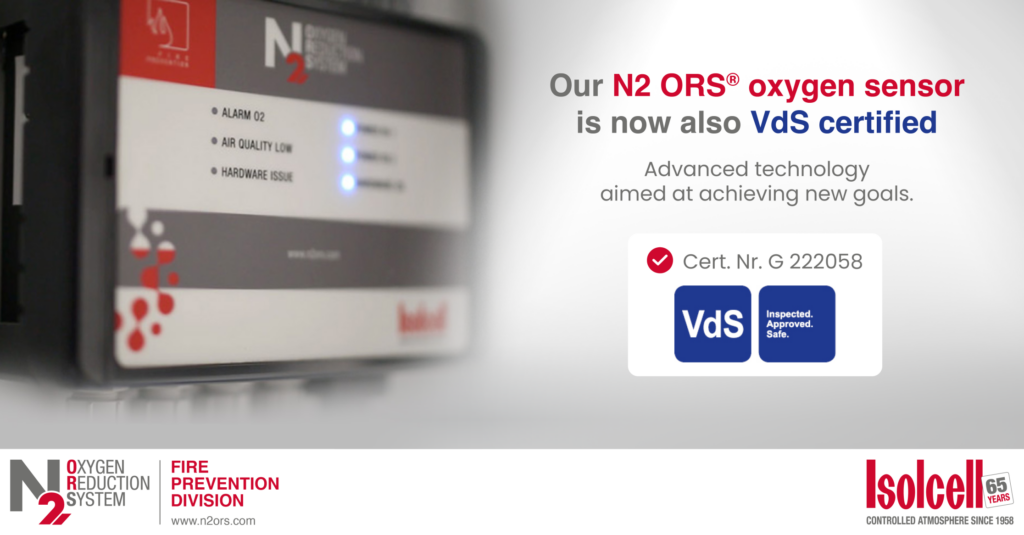
VdS approved N2 ORS oxygen sensors
The oxygen content in the automated archive is measured using the ISOLCELL N2 ORS® variable-step virtual grid. Analysis ensures that a possible failure in an individual measurement element does not influence the results of the overall measurement operations. ISOLCELL has developed a highly reliable measurement instrument. Each VdS approved N2 ORS OXYGEN SENSOR is in fact equipped with three individual sensors, supported by reciprocal measurement diagnostics with a triplicated architecture with majority redundancy. This means that the values measured are processed using a 2oo3 (two-out-of-three) voting design, thus providing a precise and unequivocal value and a high level of safety, as can be seen from the fact that even our oxygen sensors are IEC 61508:2010 certified with the significant reliability level of SIL-3.

🌱 Proud to See Tito Spaldi Featured on FreshPlaza! 🌎 Our Sales Manager shares valuable insights on the future of agriculture in the latest Fresh Plaza article.
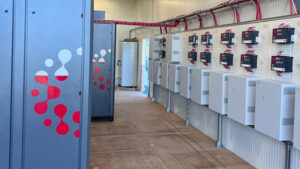
We’re thrilled to share the successful installation of a next-generation Isolcell N2 Oxygen Reduction System® fire prevention plant in an automated deep-freeze warehouse operating at -26°C with a capacity of over 32,000 pallet positions!

We’re ready to welcome you again at hall 1 stand 12!